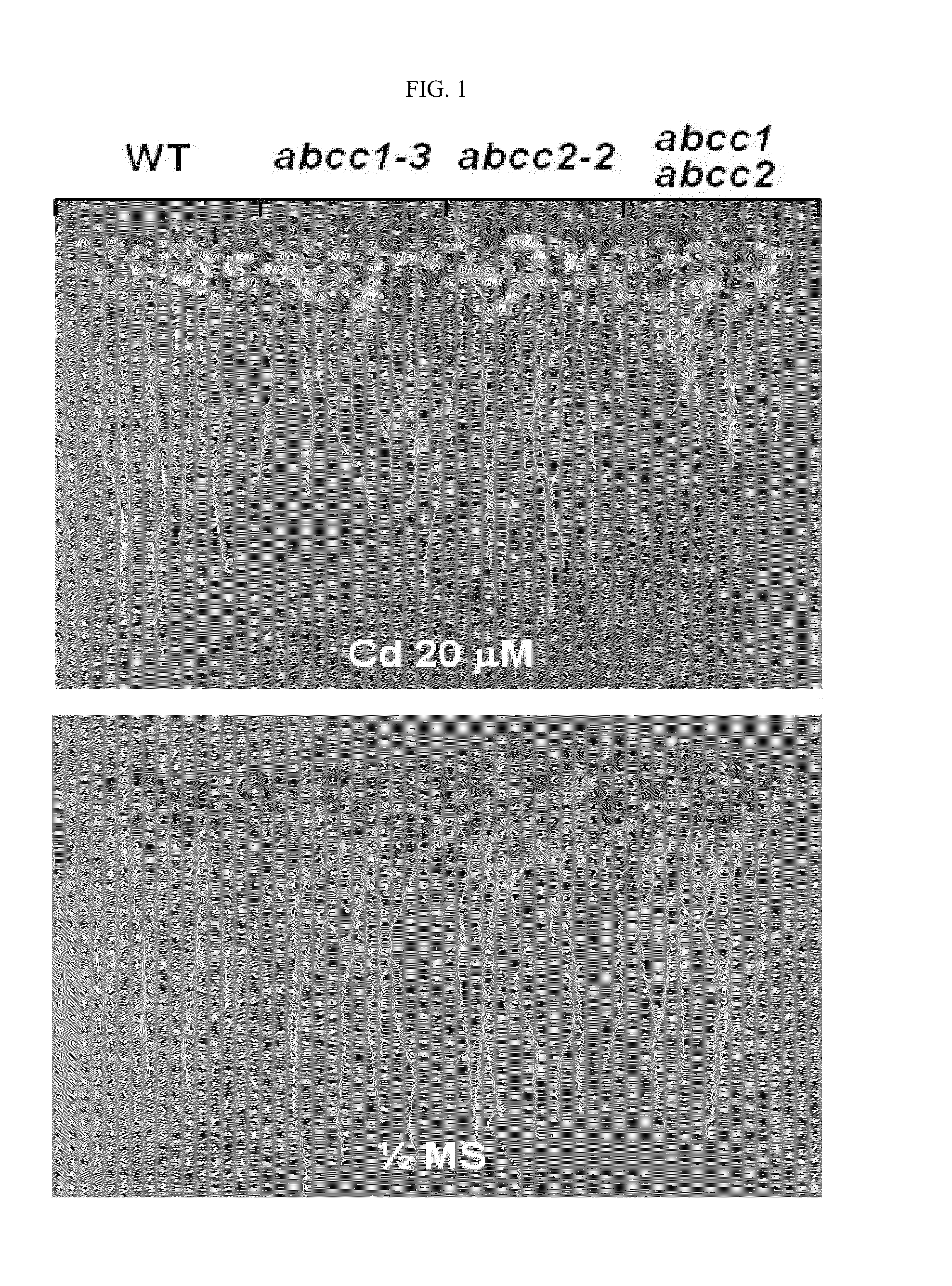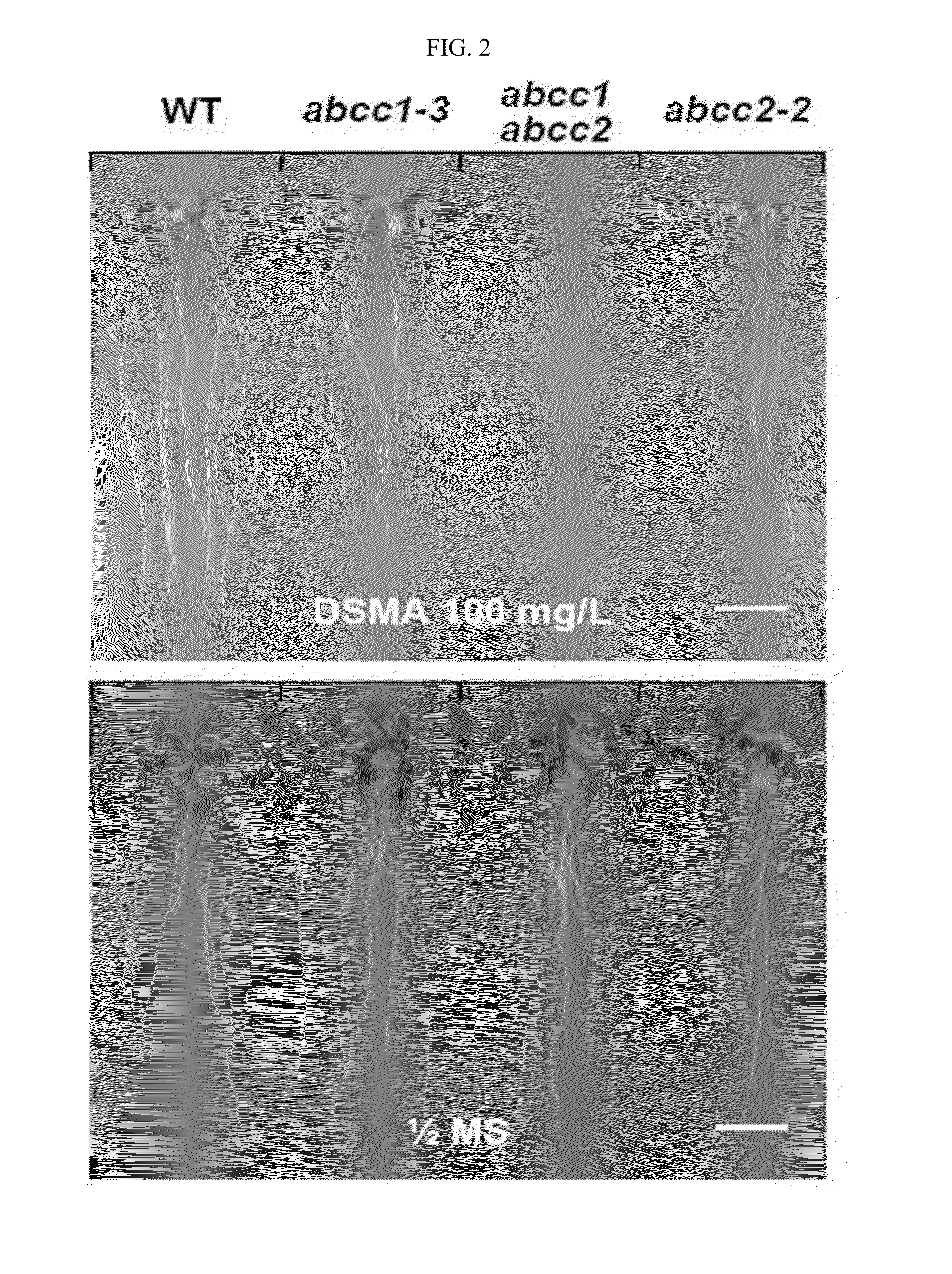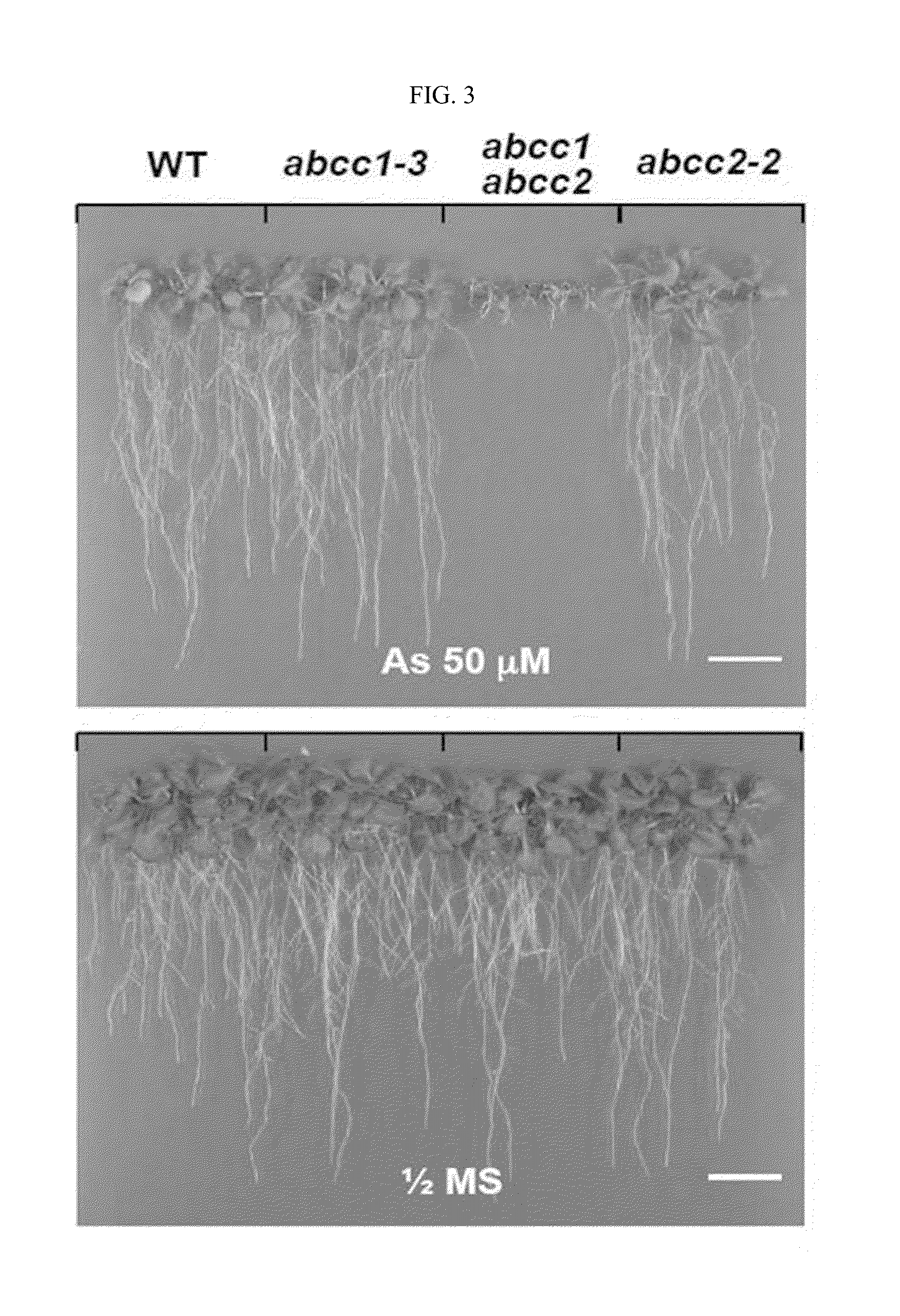Composition for phytochelatin transport
a technology of phytochelatin and transportation, applied in the field of phytochelatin transportation, can solve the problems of contaminated underground water, long time-consuming human body problems, and various health-related problems, and achieve the effects of increasing the accumulated amount of arsenic and reducing the content of toxic substances
- Summary
- Abstract
- Description
- Claims
- Application Information
AI Technical Summary
Benefits of technology
Problems solved by technology
Method used
Image
Examples
example 1
Hypersensitiveness Test of atabcc1 and atabcc2 Double Knock-Out Mutant on Arsenic, Arsenic Herbicide or Cadmium
[0058]A total of 15 homozygous knock-out lines for an A. thaliana ABCC gene were separated, and the mutants were grown in the presence of arsenic, an arsenic-containing herbicide, and cadmium. Apart from abcc2-2, abcc11-1, and abcc12-2 kindly provided by Dr. Markus Klein (Frelet-Barrand A, et al. (2008) Comparative mutant analysis of Arabidopsis ABCC-type ABC transporters: AtMRP2 contributes to detoxification, vacuolar organic anion transport and chlorophyll degradation. Plant Cell Physiol 49:557-569), all the abcc knock-out mutants were acquired from the Salk Genomic Analysis Laboratory (http: / / signal.salk.edu / ). The accession numbers and knock-out numbers of all the 15 abcc mutants are listed in Table 1. Among these, a new mutant allele, Salk 017431, of ABCC1 was used in this experiment, and named abcc1-3 after the previously studied alleles, abcc1-1 and abcc1-2. A homozy...
example 2
Test on Whether AtABCC1 and AtABCC2 in Budding Yeast Improve Arsenic Resistance and Accumulation in the Presence of PCS1 (Phytochelatin Synthase 1)
[0063]To determine whether the AtABCC1 and AtABCC2 give resistance against arsenic (As), PCR products of yhl035c::HIS3-MX6, yll015w::Kan-MX6 and yll048c::TRP1-MX6 were inserted into homologous sites (YHL035c, YLL015w, and YLL048c) of a Cd-sensitive mutant, DTY167 yeast gDNA, by means of homologous recombination and prepare budding yeast mutant SM4 mutant that is deficient of YCF1 and three other vacuole ABCC-type ABC transporter proteins, YHL035c, YLL015w, and YLL048c, and the transporter proteins AtABCC1 and AtABCC2 were expressed in the prepared SM4.
[0064]To amplify a DNA fragment for homologous recombination, the following primers and genomic DNA obtained from a single null mutant were used: Primers, His3MX6-YHL035F (SEQ ID NO: 7) and His3MX6-YHL035R(SEQ ID NO: 8), for yhl035c::HIS3-MX6, genomic DNA obtained from a YMM31 strain, primer...
example 3
Test on Whether AtABCC1 and AtABCC2 Act as Phytochelatin Transporter Protein
[0075]SM7 yeast cells transformed with a void vector (pNEV-Ura) (Sauer N & Stolz J (1994) SUC1 and SUC2: two sucrose transporters from A. thaliana; expression and characterization in baker's yeast and identification of the histidine-tagged protein. Plant J 6:67-77), pNEV-AtABCC1 or pYES3-AtABCC2 (Lu Y P, et al. (1998) AtMRP2, an Arabidopsis ATP-binding cassette transporter able to transport glutathione S-conjugates and chlorophyll catabolites: functional comparisons with AtMRP1. Plant Cell 10:267-282) were grown in an SD-Ura liquid medium (Qbiogene) at 30° C. for 4 hours, and then centrifuged for 15 minutes at a rotary speed of 2,000 g to harvest a cell pellet. All the cell lines were incubated in a YPD medium (USB, Duchefa) at 30° C. for 30 minutes, centrifuged for 15 minutes at a rotary speed of 2,000 g to harvest a cell pellet, and the cell pellet was then disassembled with lyticase (1,000 units / g fresh w...
PUM
| Property | Measurement | Unit |
|---|---|---|
| Electrical resistance | aaaaa | aaaaa |
| Content | aaaaa | aaaaa |
Abstract
Description
Claims
Application Information
 Login to View More
Login to View More - R&D
- Intellectual Property
- Life Sciences
- Materials
- Tech Scout
- Unparalleled Data Quality
- Higher Quality Content
- 60% Fewer Hallucinations
Browse by: Latest US Patents, China's latest patents, Technical Efficacy Thesaurus, Application Domain, Technology Topic, Popular Technical Reports.
© 2025 PatSnap. All rights reserved.Legal|Privacy policy|Modern Slavery Act Transparency Statement|Sitemap|About US| Contact US: help@patsnap.com



